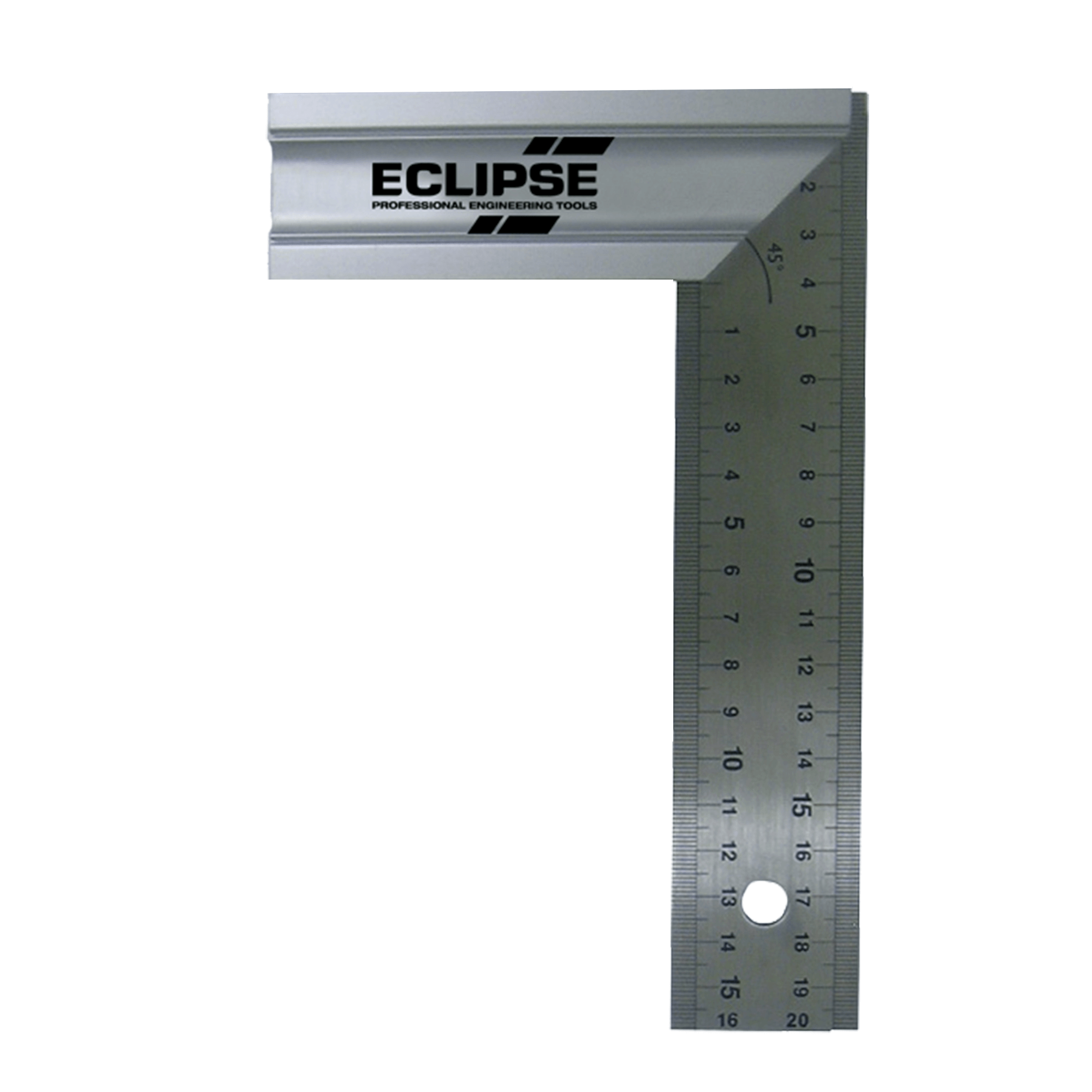Description
THIS PRODUCT: 250mm Premium Quality Stainless Steel Blade, Heavy Duty Easy Read Acid Etched Blade, Strong Aluminium Stock.
IN GENERAL: A try and miter square, often referred to simply as a try square or miter square, is a specialized measuring and layout tool used primarily in woodworking, carpentry, and other construction-related tasks. It is designed for measuring and marking precise right angles (90-degree angles) and angles commonly used in mitered or beveled joints. Here’s a brief description of a try and mitre square and some common uses:
Description:
- Shape: A try and mitre square consists of a flat metal blade, similar in shape to a ruler, with a perpendicular handle or stock attached at one end. The handle is positioned at a perfect 90-degree angle to the blade, forming an L-shaped tool.
- Measurement Markings: The blade of the try square is typically marked with both metric and imperial (imperial and/or metric) graduations along its length. This allows for accurate measurements and layout work.
- Stock or Handle: The stock or handle of the try square provides stability and a reference surface for ensuring that the square is flush with the workpiece when measuring or marking.
Common Uses:
- Right Angle Measurement: The primary use of a try and mitre square is to measure and mark perfect 90-degree (right) angles. Carpenters and woodworkers rely on it to check and ensure that corners, joints, and assemblies are square and properly aligned.
- Checking Mitered Joints: Woodworkers and carpenters use the try square to verify the accuracy of mitered and beveled joints, such as those used in picture frames, moldings, and trim work. It helps ensure that the angles are precise and fit together correctly.
- Marking Layout Lines: Try squares are essential for laying out and marking cut lines, angles, and dimensions on various materials, including wood, plywood, molding, and framing lumber. They are particularly useful when transferring measurements and angles from one piece to another.
- Scribing Lines: The straight edge of the try square, particularly the blade, can be used as a guide for scribing straight lines on surfaces or along the edge of a workpiece.
- Setting Up Machinery: In woodworking shops, try squares are sometimes used to set up and align machinery, ensuring that cutting or routing operations are performed accurately.
- Checking Squareness: Carpenters and woodworkers use try squares to check for squareness in buildings, structures, and assembled components. It’s crucial in framing walls, door frames, and window frames.
- Framing and Construction: Try squares play a vital role in framing and construction tasks, such as verifying the squareness of walls and ensuring that building components are properly aligned.
- DIY and Home Improvement: DIY enthusiasts and homeowners use try squares for various projects, including building shelves, cabinets, and furniture, to ensure that their work is square and accurately aligned.
- Quality Control: In manufacturing and quality control, try squares are used to verify the accuracy and precision of machined or fabricated components.
Try and mitre squares are indispensable tools for professionals and hobbyists in woodworking, carpentry, and construction. They provide accurate measurements and help maintain square angles, resulting in well-fitting joints, precise cuts, and high-quality finished products.


